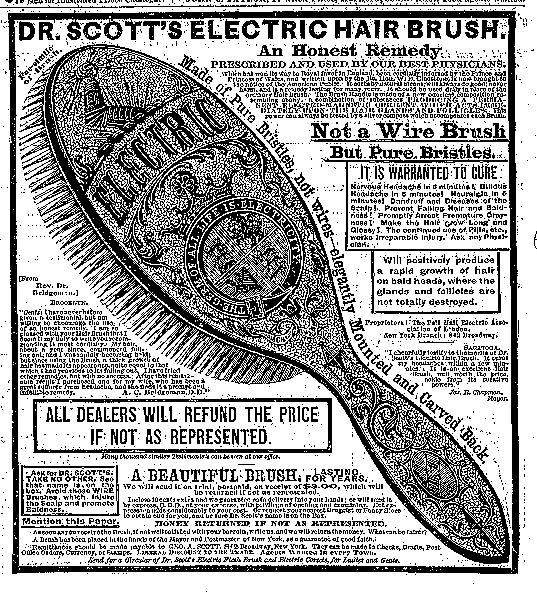Did you know that we used to think electricity was a fluid? That's why we use words like "current" and "flow" to describe what is clearly not a liquid. But in the 19th century, electricity was a force that many believed had the power to heal and recharge humans.
In the early years of scientific medicine, many doctors came to believe that nervous diseases had physical causes and could only be cured by physical means. Some compared humans to batteries, saying that we sometimes suffered from a low charge that needed a jolt of energy to recharge. This idea seemed to offer a legitimate explanation for the worn out businessman, the languishing youth, and the excitable, swooning woman of the 19th century. This "disease" came to be called "neurasthenia," a name popularized by physician George M. Beard who combined all of the so-called symptoms of the disease under one named cause.
The solution? Electricity (it also probably didn't hurt that Beard happened to be friends with Thomas Edison, the electric wizard of Menlo Park). Many doctors came to believe that we could recharge our "neural batteries" with electricity. And so various devices purporting to soothe weary brains began to appear with increasing frequency. My favorite is Dr. Scott's Electric Hair-Brush, which claimed to both make hair more glossy and calm worn-out brains.
The era of electric medicine began to come to an end by the turn-of-the-20th century. Because neither neurasthenia nor electricity actually exhibited physical changes--only proclamations of change (suggestion is powerful)--skepticism about its power began to emerge in the medical community. We also had new theories about mental illness and the mind as scientific research advanced. Electricity remained a magical force, though, its enigmatic nature and invisible power provoking the imagination to ever more fantastical heights.

No comments:
Post a Comment